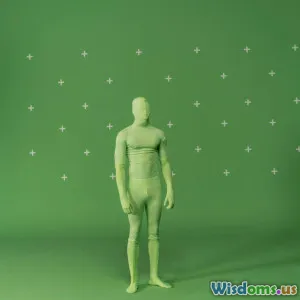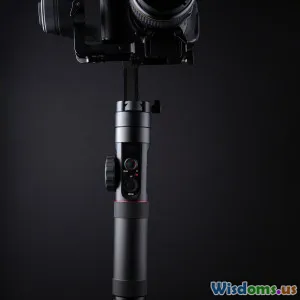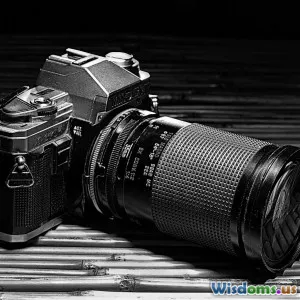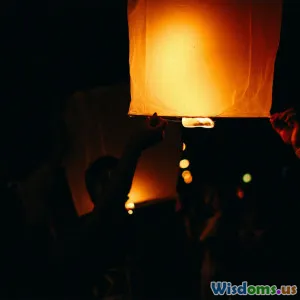
Exploring New Filmmaking Techniques
6 min read Discover innovative filmmaking techniques to elevate your storytelling and capture unique visual narratives. (0 Reviews)
Exploring New Filmmaking Techniques
Filmmaking is an ever-evolving art form that combines technology, creativity, and storytelling. As audiences become more sophisticated, filmmakers must adapt and explore new techniques to engage viewers effectively. This article outlines several innovative techniques that are shaping the future of filmmaking, providing insights that can help both budding and seasoned filmmakers enhance their craft.
1. Virtual Reality (VR) Storytelling
Virtual reality has transformed the way stories are told. Unlike traditional filmmaking, VR immerses the viewer in a 360-degree environment, allowing them to explore the narrative from various angles. This technique invites audiences to interact with the story, making them active participants rather than passive viewers. For instance, projects like The Invisible Hours allow players to navigate a dramatic narrative in real-time, experiencing different perspectives and outcomes based on their choices.
Benefits of VR in Filmmaking:
- Enhanced Immersion: Viewers can feel as though they are part of the story.
- Interactive Elements: Audiences engage with the plot through choices and exploration.
- New Narrative Structures: Filmmakers can play with non-linear storytelling and multiple viewpoints.
2. Cinematic Drones
The use of drones in filmmaking has skyrocketed, offering breathtaking aerial shots that were once only possible with helicopters. Drones provide filmmakers with the ability to capture sweeping landscapes, intricate movements, and dynamic angles without the hefty costs associated with traditional aerial photography.
Advantages of Using Drones:
- Cost-Effective: Drones are significantly cheaper than hiring a helicopter and crew.
- Versatility: They can be used in various environments, from urban settings to remote natural landscapes.
- Increased Creativity: Filmmakers can achieve unique shots that enhance storytelling.
3. Motion Capture Technology
Originally used in animated films and video games, motion capture technology is now becoming more prevalent in live-action filmmaking. By using sensors to track an actor's movements, filmmakers can create realistic character animations and visual effects. This technique was famously used in films like Avatar and The Lord of the Rings, allowing characters like Gollum to come to life with remarkable authenticity.
Key Benefits:
- Realism: Creates lifelike characters that resonate with audiences.
- Flexibility: Filmmakers can experiment with characters that may not be feasible in real life.
- Efficiency: Streamlines the animation process, saving time in post-production.
4. Augmented Reality (AR) in Film Promotion
While AR has primarily been utilized in gaming and advertising, its potential in film promotion is vast. Filmmakers can create immersive experiences that engage fans before the film's release. For example, the use of AR apps to provide behind-the-scenes content, interactive character experiences, or even exclusive sneak peeks can build excitement and anticipation.
Impact of AR:
- Engagement: Provides fans with a unique way to interact with the film’s universe.
- Innovation: Sets the film apart from traditional marketing strategies.
- Community Building: Fosters a sense of community among fans through shared experiences.
5. Advanced Editing Techniques
With the rise of editing software and technology, filmmakers can now experiment with various editing styles to create unique narratives. Techniques such as jump cuts, fast cuts, and split screens can enhance the storytelling experience and maintain viewer interest. For example, films like Birdman used seamless editing to create the illusion of a single continuous shot, drawing viewers into the protagonist's chaotic world.
Benefits of Innovative Editing:
- Pacing Control: Editors can manipulate the rhythm and flow of the story.
- Visual Storytelling: Editing can convey emotions and themes without dialogue.
- Creative Freedom: Filmmakers can explore new styles that resonate with modern audiences.
Conclusion
As technology continues to advance, filmmakers have a wealth of innovative techniques at their fingertips. By embracing these new methods—be it through virtual reality, drone cinematography, motion capture, augmented reality, or advanced editing techniques—filmmakers can create captivating narratives that engage and inspire audiences. Exploring these techniques not only enriches the filmmaking process but also redefines what is possible in visual storytelling. As you embark on your filmmaking journey, consider how these innovations can elevate your next project and connect with viewers in profound ways.
Rate the Post
User Reviews
Popular Posts





















